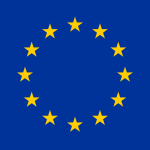16 Jun FATF Grey List Developments and Updates – June 2025
FATF Grey List – As of the FATF Plenary in Strasbourg in June 2025, several countries had their status updated or reviewed based on progress made against their action plans. Here’s a summary of the key changes and developments.
New Additions to the Grey List
Bolivia and the Virgin Islands (UK) were newly added to the FATF Grey List following the latest evaluations. Both jurisdictions have made high-level political commitments to address strategic AML/CFT deficiencies and have shown early signs of progress.
Countries Making Notable Progress
- Nigeria, South Africa, and Mozambique were recognised for having substantially completed their action plans, warranting on-site assessments.
- Burkina Faso and Namibia also advanced significantly in aligning with FATF standards.
Countries with Expired Deadlines and Ongoing Work
Several jurisdictions, including Democratic Republic of the Congo, Vietnam, and Haiti, have made progress but still have work remaining, with all deadlines now expired. FATF continues to encourage these countries to maintain political momentum and implement pending reforms.
FATF Grey List vs Blacklist: What’s the Difference?
The FATF maintains two primary public lists: the grey list and the high-risk jurisdictions list (often referred to as the blacklist). While grey-listed countries are working with FATF under close monitoring, blacklisted jurisdictions are deemed non-cooperative and are subject to calls for enhanced due diligence and counter-measures.
As of June 2025, only a few countries are blacklisted, such as North Korea and Iran, compared to the larger and more dynamic group on the FATF Grey List.
The FATF Process: How Countries Are Listed
FATF uses a Mutual Evaluation Review (MER) to assess the technical compliance and effectiveness of a country’s AML/CFT regime. If significant deficiencies are identified, and if the jurisdiction agrees to work collaboratively on reforms, it may be placed on the grey list.
Each country is then given a tailored action plan with specific timelines. FATF and its regional bodies (FSRBs) monitor progress, and if sustained efforts are shown, a jurisdiction can be removed from the list after an on-site visit.
Regional Focus: Africa and Asia Dominating the List
As of June 2025, many grey-listed countries are in Africa and Asia. This includes:
- Africa: South Africa, Nigeria, Angola, Namibia, Kenya, Mozambique, Burkina Faso, Cameroon, Côte d’Ivoire, DRC, South Sudan
- Asia: Nepal, Laos, Lebanon, Syria, Vietnam
This trend reflects the global nature of FATF’s work and the challenges of developing AML/CFT infrastructure in emerging economies.
FATF Grey List Impact on Financial Institutions
Financial institutions are particularly sensitive to FATF listings. A jurisdiction’s appearance on the grey list can trigger enhanced compliance controls such as:
- Heightened customer due diligence
- Increased reporting obligations
- Ongoing transaction monitoring
- Enhanced scrutiny of correspondent banking relationships
For banks and businesses, understanding the FATF Grey List is crucial for managing compliance risk and maintaining international partnerships.
De-risking and FATF’s Position
Despite perceptions, FATF does not advocate de-risking or cutting off entire classes of clients due to grey listing. Instead, it promotes a risk-based approach, ensuring financial institutions assess and manage risk rather than simply exiting customer relationships.
FATF also reminds countries to respect international obligations such as humanitarian exemptions and not to disrupt legitimate financial flows, including remittances and NGO funding.
Full list of Countries on the Grey List as of June 2025
Algeria, Angola, Bolivia, Bulgaria, Burkina Faso, Cameroon, Côte d’Ivoire, Democratic Republic of the Congo, Haiti, Kenya, Lao PDR, Lebanon, Monaco, Mozambique, Namibia, Nepal, Nigeria, South Africa, South Sudan, Syria, Venezuela, Vietnam, Virgin Islands (UK), Yemen.
How Countries Exit the FATF Grey List
To be removed from the grey list, countries must:
- Demonstrate full and effective implementation of their action plan
- Undergo an on-site assessment confirming sustainability of reforms
- Continue showing political commitment to maintaining AML/CFT improvements
Recent examples of countries exiting the list after successful reforms include Croatia, Mali and Tanzania, highlighting that removal is possible with sustained effort and international cooperation.
Looking Ahead: Continued Monitoring and Support
FATF, together with regional organisations such as GIABA, MONEYVAL, CFATF, and APG, continues to assist countries through technical guidance, training, and evaluation.
The grey list is dynamic, and jurisdictions can move in or out based on their progress. For stakeholders across banking, fintech, and regulatory sectors, staying informed on grey list changes is essential.
The FATF Grey List plays a vital role in shaping global efforts to combat financial crime. While being listed is not ideal, it also provides an opportunity for countries to strengthen their legal and institutional frameworks. For financial professionals, understanding the implications of the grey list is critical for risk management and compliance strategy.
As global standards evolve, the FATF Grey List remains a key tool in pushing for greater transparency, accountability, and integrity in the international financial system.
With KYC Lookup you can stay up to date with the latest FATF Grey List Updates, you can also train you team with fully accredited AML online courses.




No Comments